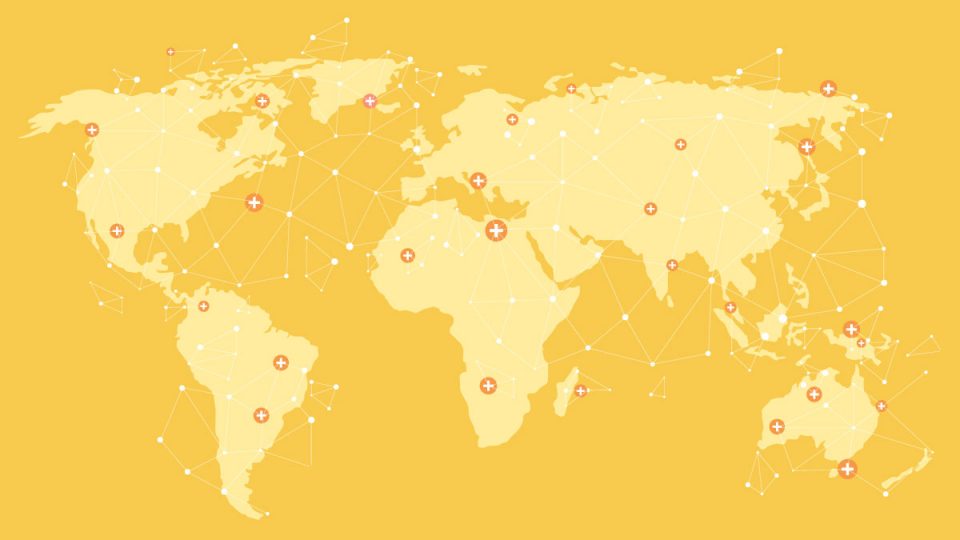
Entrepreneurship may be seen as a key to improving society and economies in America and much of the developed world. But how much faith do other cultures put in it, especially those with vastly different beliefs about gender, authority and openness to change?
There was perhaps no better place to understand how the rest of the world feels about it than at the 2016 Global Entrepreneurship Summit held last month at Stanford University.
On stage with President Barack Obama, three young entrepreneurs shared their stories about founding ventures in countries as distant from Silicon Valley – in miles and mindset – as one could imagine. They included the founders of an Egyptian event-promotion app and platform, a startup in Rwanda that turns waste into renewable energy, and a social startup in Peru that empowers under-educated women by teaching them coding and other professional skills.
Jean Bosco Nzeyimana, founder and CEO of the Rwandan startup, described one of the biggest differences in mindset between investors in the valley and those in his home country: a respect for elders and a dismissiveness of younger people, especially in regards to tackling societal issues such as waste management and energy creation.
“In my culture, it is believed that those great initiatives are started by old people,” Nzeyimana told Obama. “So I tried to disrupt that status quo and created this company. But of course, during this period, no one was even trusting me.”
That was just one of many challenges that entrepreneurs at the summit said they faced back home. And yet, the more than 700 entrepreneurs who flew in from across the globe illustrated how much optimism exists worldwide.
Recent research initiatives support growing enthusiasm around entrepreneurship internationally. For instance, a 2010 report published by the Kauffman Foundation showed that new startups are responsible for all net job creation. And more recently, the 2015-16 Global Entrepreneurial Monitor report, which tracks characteristics, rates and societal attitudes around entrepreneurship, found that the positive perceptions around entrepreneurial careers and opportunities were highest in “factor-driven economies” – defined by the World Economic Forum as economies dominated by businesses with a heavy reliance on (unskilled) labor and natural resources.
In other words, economies with the highest potential for growth recognize the importance of entrepreneurship towards their future development and are eager to capitalize on the opportunities.
With the rise of entrepreneurship-education programs, literary resources and other learning opportunities, gaining access to entrepreneurship training has never been easier. This access to information is incredibly important to the propagation of entrepreneurial ecosystems globally. But being successful as a global entrepreneur means going beyond blanket best practices, learning how to adopt ideas to the specific ecosystem at hand, and developing an entrepreneurial mindset that will serve as an asset in different contexts.
Regional differences at play
In addition, leaders in the field believe that thinking globally is becoming increasingly important for all entrepreneurs. “Remember that entrepreneurship is a way of life, and being globally minded is no longer a choice if you want to be a successful entrepreneur,” said Rebeca Hwang, a Stanford graduate and lecturer who has worked as an entrepreneur on multiple continents.
Noting that entrepreneurs around the world share many personality traits – including a high level of technical or entrepreneurial talent and a hunger to create something amazing – Huang says she sees different entrepreneurial norms and behaviors at play in each region.
In general, Europe has available capital and reliable institutions – though a certain sense of complacency and aversion to risk can exist in areas where a non-entrepreneurial career is believed to provide more stability and security. And yet, there is a growing interest in Europe for entrepreneurship, according to Lena Ramfelt, who teaches entrepreneurship, marketing and innovation at Stanford and the Stockholm School of Economics.
“In many large cities in Europe, you can almost describe the growing interest as a movement, where you might have to explain why you are not an entrepreneur rather than the other way around,” said Ramfelt, adding that excitement has spread beyond the high-tech sector into areas such as social entrepreneurship and ventures focusing on creative markets.
In contrast, Latin America has high potential for fast growth with plenty of young and hungry talent. But the region also faces some institutional challenges, like a lack of venture capital, according to Felipe Jara Schnettler, director of entrepreneurship at the integrated higher-education system INACAP, which is based in Chile.
“The missing link in the region, in spite of growing interest in entrepreneurship, is private funding,” Schnettler said. “Although there are people and families with big amounts of capital, there is still little interest in becoming part of a venture capital or angel network. This is mainly due to risk aversion, which may be driven by limited number of success stories so far.”
Meanwhile, Asia and South East Asia are booming with entrepreneurship and have tremendous market opportunities. But Hwang explains that the horizontal culture of entrepreneurs can clash with the traditionally hierarchical status quo in many countries there.
During a panel on entrepreneurship in China at the Global Entrepreneurship Summit, the founder of a venture-capital firm also commented on how the mix of opportunities and challenges make China’s entrepreneurial landscape quite complex and dynamic.
“Every day we see new companies, we see new opportunities,” remarked Northern Light Venture Capital Founder Feng Deng. “We also see a lot of challenges in terms of not only in the technology side, but a lot of times it’s the whole environment, for example the government regulations.”
As for the Middle East and Africa, political instability and conflicts continue to haunt what are otherwise emerging markets with great potential. The stigma of failure also hinders many potential entrepreneurs, according to Tim Weiss, an academic researcher who studies entrepreneurship in Kenya.
“In Kenya, failure is more sticky to the person,” Weiss said. “The repercussions an individual faces for failing make it much riskier to fail than in an environment where failures are understood as an integral part of becoming an entrepreneur. As a result, many entrepreneurs don’t pursue their boldest ideas, even if they have the potential to be the most rewarding.”
Given the unique cultural, political and business climates in different regions of the world, experts say global entrepreneurs must learn how to navigate varying conditions and diverse entrepreneurial ecosystems. And due to these diverse conditions, entrepreneurial practices that work in one region or ecosystem may not translate directly to another, meaning that global entrepreneurs must learn to be flexible when it comes to applying ideas that have worked in the past.
An “open” question?
This dynamic can trickle all the way down to the offices where work is getting done. Stanford Professor Pamela Hinds, who co-directs the Center for Work, Technology and Organization in the School of Engineering, studies the effect of different cultures on innovation.
In her research, Hinds has found that certain practices that lead to greater innovation within U.S. organizations can actually hinder innovation in other countries. In a study on the effect of open and unfinished space on innovation, Hinds and her team found that employees at U.S.-based companies thrived in open environments, but the open and unfinished “startup garage environment” was quite problematic in India.
“The unfinished nature of the space,” Hinds said, “translated into not feeling very polished. And in India, it was inconceivable to bring customers into this space because it didn’t convey the kind of professionalism that was expected of the organization.”
In other words, the cultural differences around unfinished and open space negatively affected the workers’ ability to innovate, even though that same kind of space had been proven to increase innovation in another cultural context.
In the study, rather than calling the open and unfinished space a failure, the team in India took what they learned from this experiment and adapted the space to suit their own culture and needs. The result, in the end, was an increase in innovation for this company as well.
In describing why the team in India eventually found success, Hinds said it was crucial to have someone in the innovation center in India who understood both cultures and was therefore able to advocate for the needs of the team in India.
This research is yet further proof that applying blanket best practices to an organization rarely leads to success. Rather than copying an approach that’s been proven in one country or one environment, Hinds’ work suggests that the most effective entrepreneurs take ideas from other successful companies and adapt them to their own ventures.
Having taught entrepreneurship on multiple continents, Hinds has seen equal entrepreneurial potential in students across the board. It’s when students leave their idyllic academic environments and start working in the “real world” and confront the cultural norms of each region that potential fades into conformity.
At heart, however, Hinds said, “the innovation potential in people in different places is pretty much the same.”






